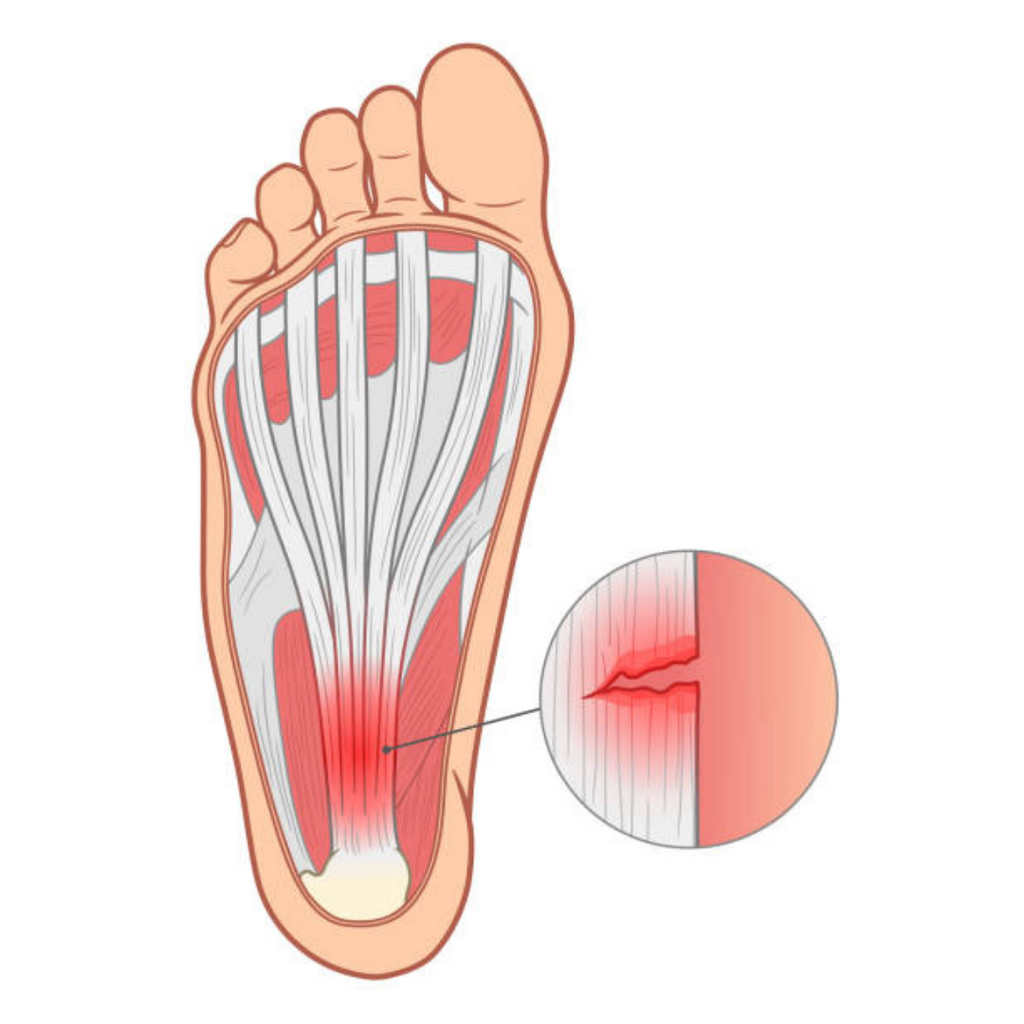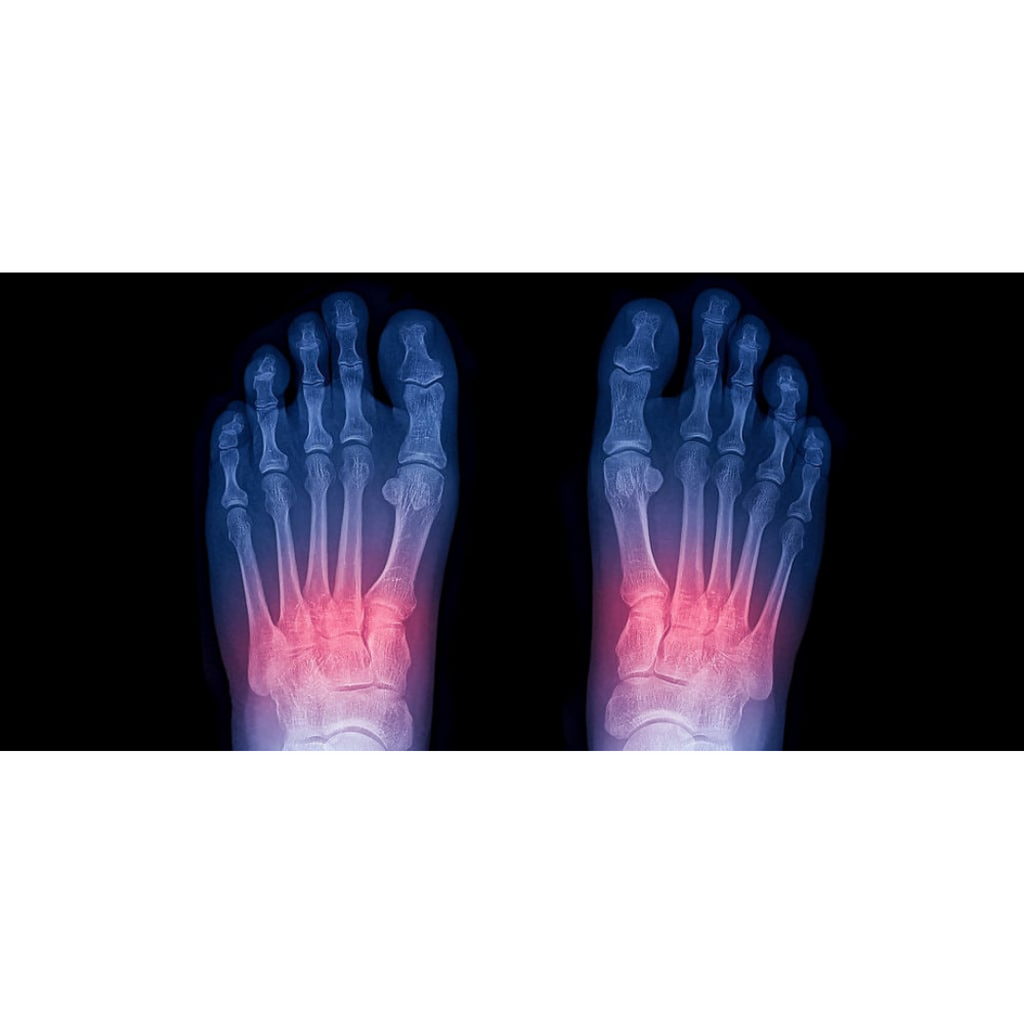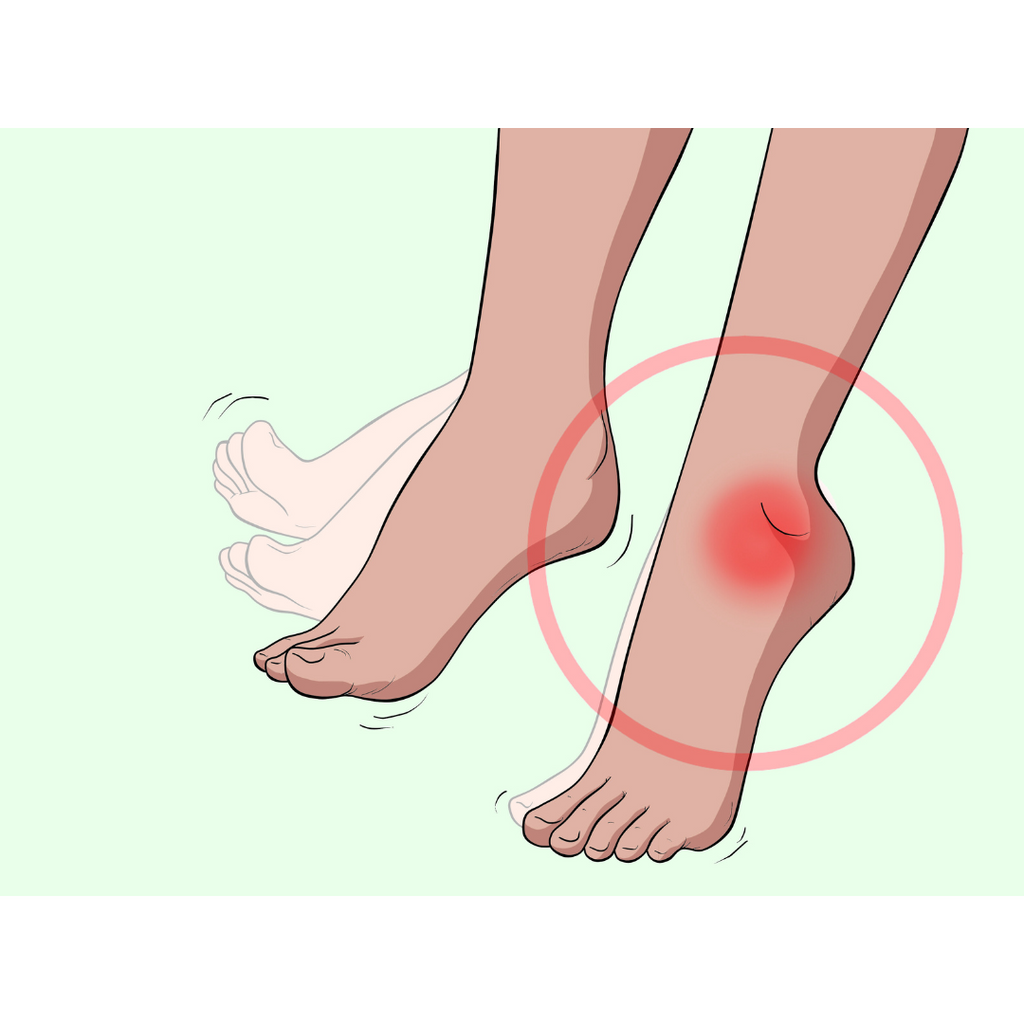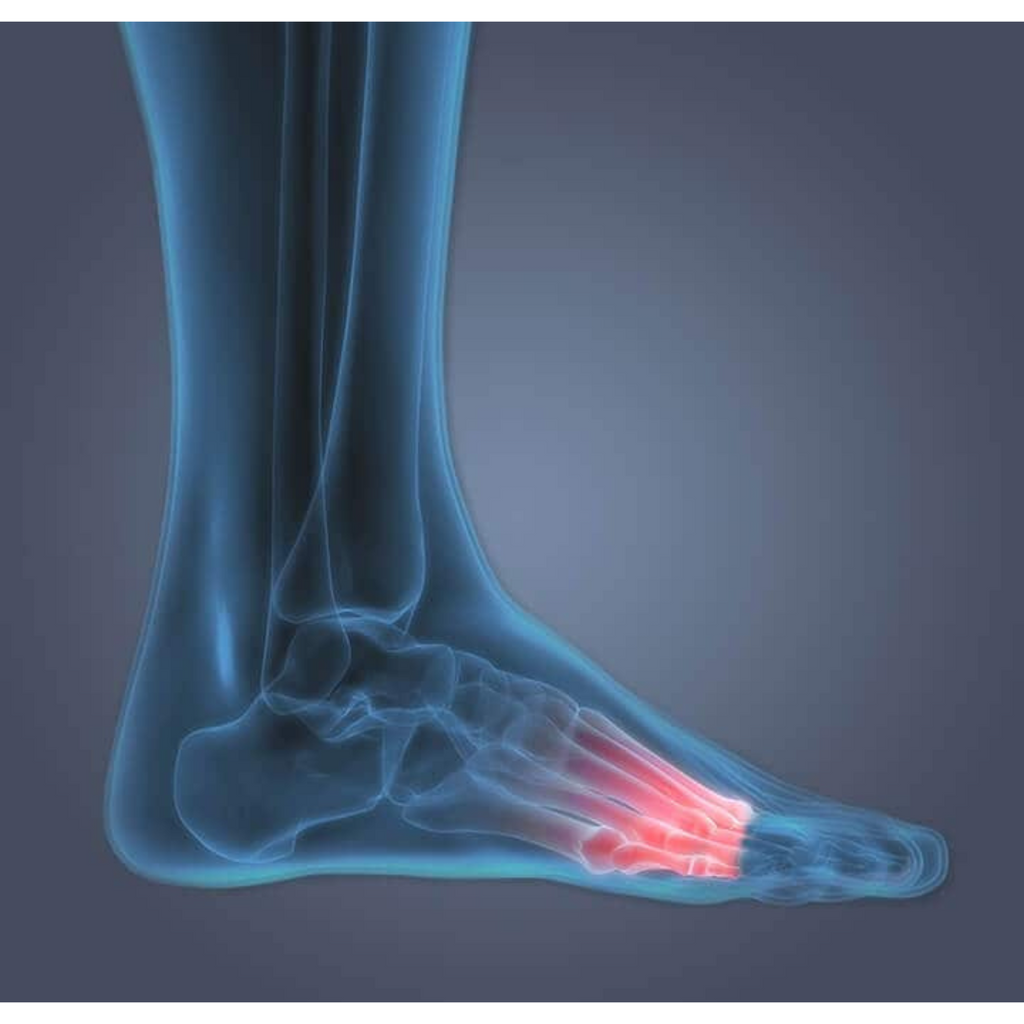What Is Drop Foot?
The various terms for drop foot do a good job of describing what it is—foot drop, slap foot, floppy foot, lazy foot syndrome, fallen foot, toe drop—you get the idea.
In essence, foot drop is the inability to lift the front part of the foot or toes (no dorsiflexion of the foot). This makes walking difficult. If you continue to walk in a "normal" manner, your toes will drag along the ground as you move, tripping you.
To avoid this, people with drop foot syndrome adopt a steppage gait, in which they bend their knee and lift their foot higher than they would normally in order to keep their toes from dragging.
When they lower their foot, it slaps forward—sometimes to the side.
Foot drop can affect one or both feet (bilateral).
Drop foot is a permanent condition for some people. For others, however, it vanishes. Which category you fall into will be determined in part by the specific cause of foot drop as well as how quickly you seek treatment. In the following article, we'll walk you through:
- some potential causes of drop foot
- some of the symptoms associated with it,
- what a foot drop brace can do for you,
- and what other treatment options (both surgical and non-surgical) are available.
We'll also spend some time discussing drop foot rehabilitation and even sharing some success stories.
Foot Drop Causes
Foot drop is not a separate condition. Rather, it is a symptom of another, deeper issue. Identifying the source of the problem can help direct foot drop treatment.
Most Common: Peroneal Nerve Injury
There are numerous causes of drop foot, but peroneal nerve injury is at the top of the list. The peroneal nerve is a branch of the sciatic nerve that runs down the leg and into the foot. Surprise, surprise—it plays a significant role in lifting the front of your foot.
Pressure, overstretching, or peroneal nerve lesions (cuts) can all impair your ability to flex your foot toward the sky. Some people have total peroneal nerve palsy (paralysis), which means they have no control over their dorsiflexion. Others are less affected by peripheral neuropathy (damage to nerves outside the brain or spinal cord).
Peroneal nerve damage can occur in a variety of ways, including:
- Trauma
- Replacement of the knee (or some other surgery to the joint)
- Surgery to repair the Achilles tendon
- A stroke that puts you in a position that puts pressure on the peroneal neve for an extended period of time.
- Dislocated Kneecap
- Fractured shin bone
- Crossing the legs or squatting for an extended period of time
And this is by no means an exhaustive list. While researching for this article, I came across a case where a person who had undergone heart surgery developed compartment syndrome, in which the pressure within the muscles reached dangerous levels. To relieve the pressure, the surgeon performed a fasciotomy, in which he cut into the fascia. The surgeon nicked the peroneal nerve in the process, causing the patient to have a foot drop.
There are numerous ways to injure the peroneal nerve.
Sciatica and Foot Drop Linkage
Damage to the peripheral nervous system further up may also be to blame. Do you remember how the peroneal nerve is a branch of the sciatic nerve? Drop foot can also be caused by pinching, severing, or overstretching that nerve.
Some scenarios that could damage the sciatic nerve and cause sciatica and/or foot drop include:
- Spinal surgery, especially in the L4/L5 region
- Hip replacement surgery
- Herniated lumbar disc
- Childbirth
- The Piriformis syndrome (spasm of a muscle in the buttocks region)
- Stroke
- Injury to the lower back
- Spinal tumors or bone spurs
Diabetes, as well as drastic weight loss, increases your risk of nerve damage in the foot.
Foot Drop Can Also Be Caused by Disease
Foot drop symptoms can appear alongside other diseases, such as ALS or MS. Those on the list include:
- Multiple sclerosis (MS) (MS)
- Amyotrophic lateral sclerosis (ALS) (ALS)
- Cerebral Palsy
- Charcot-Marie-Tooth Syndrome
- Dystrophy of the muscles
- Polio
- Parkinson's disease (PD)
Other Foot Slap Causes
Toxin exposure, weak ankles, and anatomical abnormalities may also contribute to your slap foot gait.
A stroke is another risk on multiple levels. When the flow of blood to the brain is cut off or restricted, the nerves, including those required to lift the foot, can be damaged. Muscles will also weaken during the recovery period because you won't be able to move much.
Foot Drop Symptoms Checker
The struggle or inability to flex the foot toward the ceiling, which goes hand in hand with the high-knee foot drop gait to compensate, is clearly the most obvious sign of foot drop.
However, in the early stages, these symptoms may be more subtle. Early signs of foot drop include tripping frequently, having difficulty operating your car's pedals, and having difficulty running upstairs. You can use this foot drop test to see if this is the problem.
Pain in other areas of the body caused by the dragging foot gait, such as the knees, hips, or low back, are also symptoms of drop foot. You may also develop fun things like corns, calluses, and bunions as a result of flopping your foot to the right or left.
The foot and ankle weakness can also throw you off balance, leaving you vulnerable to tripping and all the risks that come with it. An injury caused by a fall can exacerbate the problem because you will lose strength and flexibility if you are unable to use the muscles of the ankle and feet for an extended period of time.
Foot nerve problems can also cause buzzing, burning, or tingling sensations, though drop foot does not cause foot pain for some people (mercifully).
Will My Drop Foot Ever Get Better?
Your chances of recovering from foot nerve damage are determined by how long ago the damage occurred as well as how far up the nerve path the damage occurred.
The longer you wait, the less likely it is that efforts to repair the damage will succeed. The longer the foot drop recovery time, the higher up the nerve path the nerve is pinched or otherwise damaged.
In general, the nerves involved in foot drop heal at a rate of about 1/4" per month. That means that a nerve-damaged at the spinal level will take much longer to recover than a nerve-damaged at the peroneal level. And, while the recovery process is in progress, muscles can waste away (atrophy), compounding the problem.
Foot drop recovery stories abound online, with people regaining some function of their foot five years after tendon transfer surgery.
However, it is important to note that in many cases, regaining full or partial foot function can take years, and in some cases, foot drop is irreversible.
However, this does not mean that all hope is lost. You can do a lot to help your case and keep foot drop from ruining your life.
Foot Drop Treatment
There are some incredible stories about people who don't let foot drop hold them back, such as a woman with permanent foot drop who completed multiple marathons with the help of a foot drop brace for running—and doing so in times fast enough to qualify her for the Boston Marathon, no less!
There are numerous things you can do to improve your chances of recovering from drop foot or simply make it less of a burden on your life by relieving foot pain and allowing you to do the things you enjoy. We'll go over some of those options in the following section.
Address the underlying problem, if possible
A steroid injection near the nerve root in the spine can reduce inflammation that may be pressing on the nerve root when a spinal nerve is compressed. This can completely or partially resolve foot drop. If a herniated disc is to blame, surgery may be required to repair the damage and/or open up space in the spine. When diabetes is wreaking havoc on your nervous system, adjusting your blood sugar levels can help you get rid of your swollen feet. Alternatively, repositioning a dislocated kneecap can relieve peroneal nerve compression.
You get the picture. Taking care of the underlying causes of your foot pain is sometimes a relatively quick and effective treatment for temporary foot drop.
On the other hand, ignoring such issues increases the likelihood of permanent foot drop.
Buy a Drop Foot Brace
As I discussed in this article, flopping the foot forward while walking is a tripping hazard, can cause foot problems, and can create imbalances that cause pain in the knees, hips, and other joints.
Wearing a foot support brace that helps you lift your foot is a simple and relatively inexpensive way to correct these issues.
Dorsiflexion assist AFOs (ankle foot orthotics) come in a variety of styles, ranging from plastic or lightweight carbon fiber posterior leaf spring (PLS) AFOs to bulkier foot drop boots that can be worn at night to soft foot drop braces that can be worn even when you're barefoot.
One of our most popular items is a soft foot drop brace that can be worn with or without shoes. A common complaint about carbon fiber and plastic AFOs is that they dig into the leg and/or foot and, due to their bulkiness, cannot be worn with certain shoes and pants.
This brace's soft fabric will not dig in, and its slim, innovative design means you won't have to size up in shoes or worry about your pants getting caught on the product. Many "normal" shoes (within reason... we're not talking heels) become the "best" shoes for drop foot thanks to the drop-foot strap and optional shoe tongue insert. This dynamic AFO can even be worn barefoot or with sandals.
The low-profile design also provides more flexibility than some of the more rigid supports, which can help you maintain more muscle strength and flexibility, which is essential for proper foot function.
That being said, this sock-like item that lifts the foot is not meant for strenuous athletic activity. If you're looking for a running foot drop brace, you'll probably need a carbon fiber ankle foot orthosis, possibly a hinged one.
Another popular request is for a foot drop night brace, which supports the foot while you sleep. Without a dorsiflexion night splint, your foot may flop to the side, putting strain on other areas of your body and reinitiating the ankle and foot pain, burning, and tingling that is associated with neuropathy.
This dorsiflexion night splint is designed to keep your ankle and foot at a 90-degree angle while you sleep. This foot and ankle brace is much less bulky than traditional foot drop night braces and has a breathable, open heel design that improves sleep quality.
You can wear it whether you sleep on your side, back, or stomach.
And the medical-grade fastener used to secure its highly adjustable straps is ten times stronger than standard fasteners, so it won't come loose during the night.
If you prefer a more traditional boot to prevent foot drop at night (or during the day), this drop foot brace for sleeping should be considered. The brace's rigid shell forms a "L" that supports the foot, with cushioning to make it more comfortable against the skin. The front of the dorsiflexion boot is fairly open, with a series of straps providing a customized fit.
Tread along the bottom of the anti-foot-drop boot reduces the likelihood of tripping on late-night bathroom trips.
Consider Electrical Stimulation for Foot Drop
This method of keeping the foot up is based on a small electrical charge applied by a small device (sometimes referred to as a TENS unit) worn just below the knee. The energy jolt from the functional electric stimulation (FES) device to the peroneal nerve can stimulate contraction of the muscles that lift the front of the foot up, allowing you to walk more naturally.
This movement allows you to continue to exercise the muscles and other tissues of the leg and foot while also reducing fatigue caused by walking around in an orthopedic brace.
This seems obvious, doesn't it? The catch is that they are expensive (around $5,000), and insurance often does not cover such devices. Furthermore, they do not work for everyone.
A TENS unit for foot drop is also not a perfect solution... You will still have to consider your walking style and wait for your foot to move before taking a step. Some users have also expressed a desire for more assistance.
It's probably a good idea to find a clinic that does fittings for such products and try one out before committing to nerve stimulation for foot drop treatment.
Do Regular Foot Drop Exercises and Stretches
One of the major risks of foot drop is that the muscles in your foot, ankle, and leg can lose strength and flexibility as you are unable to use them for an extended period of time. They may even atrophy, or waste away, over time.
As a result, strengthening and stretching exercises for the feet and ankles are an important part of drop foot treatment. Activity can also help to maintain and/or strengthen the mind-body connection, which is important when the nerves in the leg and foot aren't firing properly.
Physical therapy to strengthen weak feet and ankle muscles can help some people with foot drop symptoms by improving balance, increasing range of motion, and keeping tissues limber.
Exercises for foot physiotherapy are not a quick fix. Drop foot exercises work best when a patient commits to doing them on a regular and long-term basis.
It's also worth noting that simply staying as active as possible will help prevent muscle wasting, even if you're wearing an AFO brace for foot drop.
7 EXERCISES TO STRENGTHEN FEET AND ANKLES YOU CAN DO AT HOME
While you can and should consult with a professional to develop a specific physical therapy regimen for foot drop, here are a few examples of foot drop treatment exercises to get you started:
- Seated ball lift: Place your feet flat on the floor and sit in a chair. In front of you, place a small ball (such as a tennis ball). Grab the ball with both feet and gradually extend your legs to lift it. Hold for a few seconds before lowering to the ground. Rep 10 times more.
- Marble pickup: Place your feet flat on the floor and sit in a chair. Place approximately 20 marbles in a bowl on the floor in front of you, with an empty bowl next to it. Transfer all of the marbles to the empty bowl with the toes of your affected foot.
- Toe-to-heel rocks: To get onto your toes, rock your weight forward and hold the position for 5 seconds. Then, rock your weight back and lift your toes off the ground for five seconds. Rep 10 times more. You can make it more difficult by standing on one leg. You might want to do this exercise next to a wall or with a chair or counter in front of you for added support.
- Modified toe raises: If you can't do the toe-to-heel rocks, give this one a shot. Slide your unaffected foot underneath the affected one while seated. Lift the front part of the affected foot with the lower foot while keeping both heels on the ground. Rep 10 times more.
- Towel Stretch: Sit on the floor, your legs outstretched in front of you. Wrap a towel or resistance band around your foot's arch. Pull the towel/band closer to your body for a good stretch. Hold for 30 seconds before releasing. Repeat five times more.
- Ankle Eversion: Place your affected foot slightly ahead of your other foot. Rotate your ankle/foot to raise the outer edge of your foot toward the sky, hold for a few seconds, and then return the foot to the ground. When performing this exercise, concentrate on twisting the foot rather than the leg. 10 times more
- Ankle rotations: Take a seat in a chair with your back supported. Raise one leg in the air and slowly rotate your foot inward, holding the position for a few seconds. Then, slowly rotate and hold your foot outward. Repeat for each leg ten times. You can make this more difficult by wrapping weighted bands around your ankle.
Don’t Ignore Foot Pain… Medication and Natural Remedies Can Provide Relief
Suffering can have a negative impact on your overall well-being and limit your willingness to get out and enjoy a more active lifestyle, which is essential for peroneal nerve damage recovery or foot drop management. As a result, it's critical to do everything possible to prevent foot drop from ruining your life.
A doctor can prescribe medications to alleviate nerve pain, burning, tingling, and other symptoms. There are some natural, homeopathic methods for treating/managing foot drop that may be worth a try as well.
Massage is an excellent way to stretch and work the joints and tissues of the foot and ankle, and physical therapy frequently includes this hands-on mode of care. Working these tissues with soft-tissue or deep friction massage can improve the foot and ankle's range of motion and function.
There are essential oils for foot and ankle pain that may help with some of your drop foot symptoms. Here are a few examples:
- Peppermint
- Black pepper
- Frankincense
- Birch
- Lemongrass
- Wintergreen
Determine Whether Foot Drop Surgery is a Viable Option
There are also surgical options to treat or cure foot drop, though your success rate will be determined by the underlying cause, the length of time since the initial peroneal or sciatic nerve damage occurred, your age and health, and other factors.
In some cases, addressing the underlying cause, such as a herniated disc, may help decompress the sciatic nerve and restore foot function. If pressure on the peroneal nerve is the cause, a surgeon may be able to release a tight fascial edge, restoring peroneal nerve and foot function.
TENDON TRANSFER FOR FOOT DROP TREATMENT
Tendon transfer surgery may improve a patient's ability to lift their foot in some cases. If other foot and ankle muscles still function, this is a better option for you.
A tendon and some attached muscle (often the posterior tibial tendon) are transferred from one area of the foot to another to replace tissue that is no longer functioning.
You will need to be off your feet for several weeks following surgery, including time in a cast and boot, followed by weeks of physical therapy and the use of a night splint for several months.
As you can see, recovery from foot drop surgery is lengthy. The goal of surgery is for you to be able to walk without a brace. However, surgery is not a guarantee that this will occur, and full or partial use of an AFO for foot drop may still be required.
Furthermore, while this procedure may be beneficial, it will not fully restore strength and range of motion to the foot and ankle.
NERVE TRANSFER FOR FOOT DROP TREATMENT
For some, nerve transfers are an option. Nerves with minor functions are transferred to the branch of the nerve that flexes the foot during this surgery.
This procedure, once again, has a lengthy recovery period. Small signs of progress will appear three to six months after the operation, but movement may not return for six to twelve months. Extensive therapy will be required to not only train the transferred tendons to lift the foot, but also to address the loss of the "donor" nerves.
SURGERY TO FIXATE THE FOOT AND ANKLE
Another option for drop foot surgery is to fuse the ankle and foot joints so that they are better aligned, cause less pain, and function better. This procedure, known as arthrodesis, can be performed in a variety of ways.
Again, fixing the ankle and foot is not a perfect solution, but it does provide pain relief and improves foot/ankle function for some people with drop foot.
A Few Tips for Living with Foot Drop
There are a few things you can do to reduce the risk of tripping in your own home, such as keeping your floors clear of clutter and throw rugs. Tucking electrical cords away from walkways can also reduce the likelihood of them tripping you. In addition, good lighting in rooms and stairwells can make your life easier by highlighting tripping hazards.
Rushing or multitasking while getting from point A to point B can also increase your chances of falling. Slow down and avoid trying to do too much at once.
The digital age has also increased the accessibility of support groups for those suffering from foot drop. Tips, inspiring stories, and updates on innovative foot drop aids that can help make this condition less of a burden can be found on online blogs and forums.






